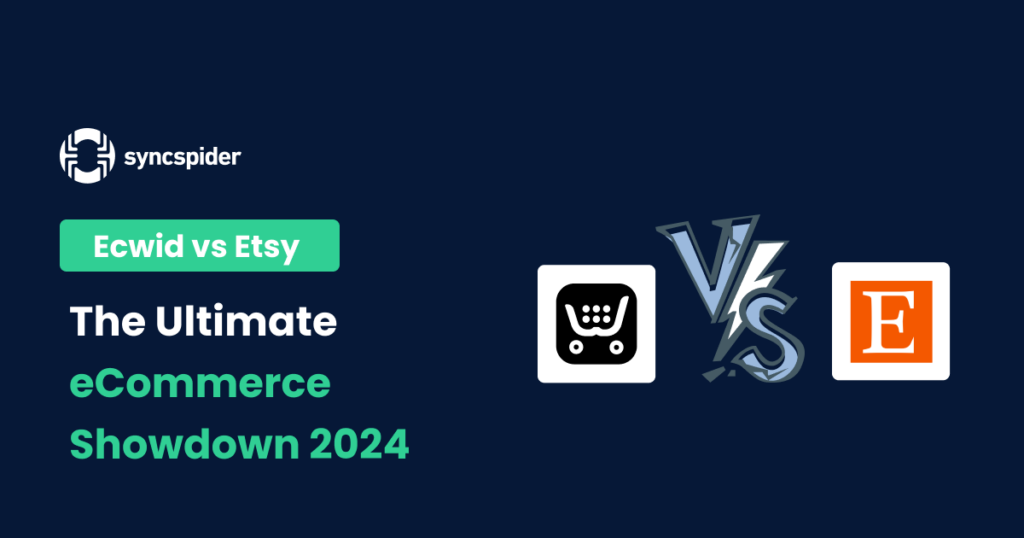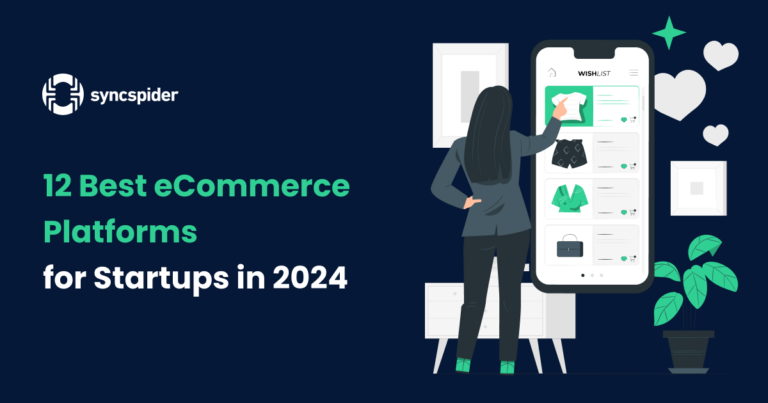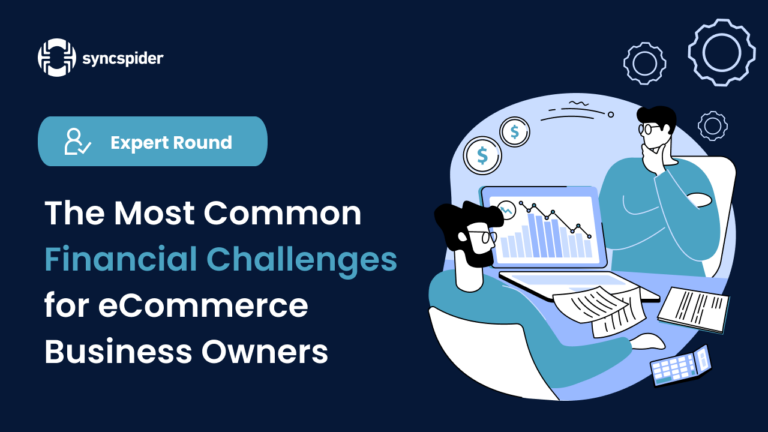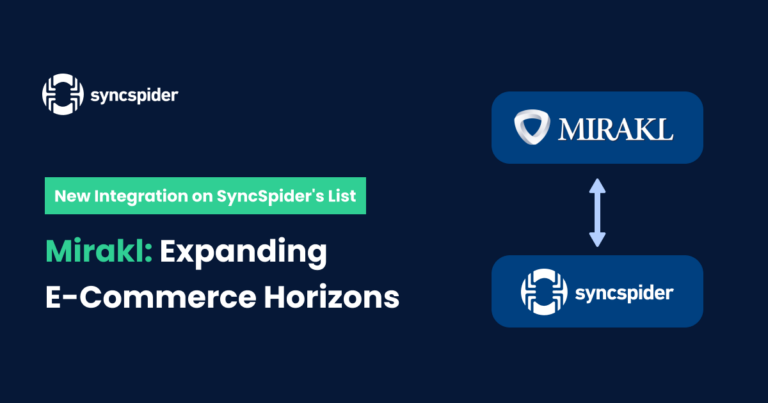Double trouble, you say? Ecwid vs Etsy? Whether you’re spreading your eCommerce wings or just taking the first flutter, the big question looms: Marketplace or platform? Is there even a difference??? Spoiler alert: Absolutely, there is! The destination might be the same, but the journey? Oh, that’s a whole different story.
I hear you, wondering which path is the yellow brick road to eCommerce success. Well, your trusty content writer is here, sleeves already rolled up, ready to dive deep into the heart of these two giants. We’re about to unravel the mysteries and maybe, just maybe, find a few surprises along the way. Buckle up; it’s exploration time!
Ecwid vs Etsy: Spot the Difference!
Alright, let’s strip it back to the bare bones: Etsy is your bustling eCommerce marketplace, just like Amazon and eBay, while Ecwid stands tall as an eCommerce platform. Think of Etsy as a vibrant, crowded bazaar and Ecwid as your own personal boutique setup.
The big difference? It’s all about control. With a platform like Ecwid, you’re the captain of your ship, steering with autonomy. But in the marketplace seas of Etsy, you’re sailing with additional costs, a few more rules, and maybe even some country-specific icebergs.
Now, you might be scratching your head, wondering why anyone would choose the marketplace route with all its extra luggage. Well, it’s not all stormy seas. Marketplaces like Etsy have a secret weapon: a ready-made audience eagerly searching for treasures within its realm.
Think of it this way: Selling potatoes on a busy street corner is hit or miss. Sure, lots of people walk by, but how many are actually looking to buy what you’re selling? Etsy, in contrast, is like a specialized fair where everyone is there to shop what you offer. It’s a place where your potential customers are already hanging out, looking for something special – just like what you’re selling.
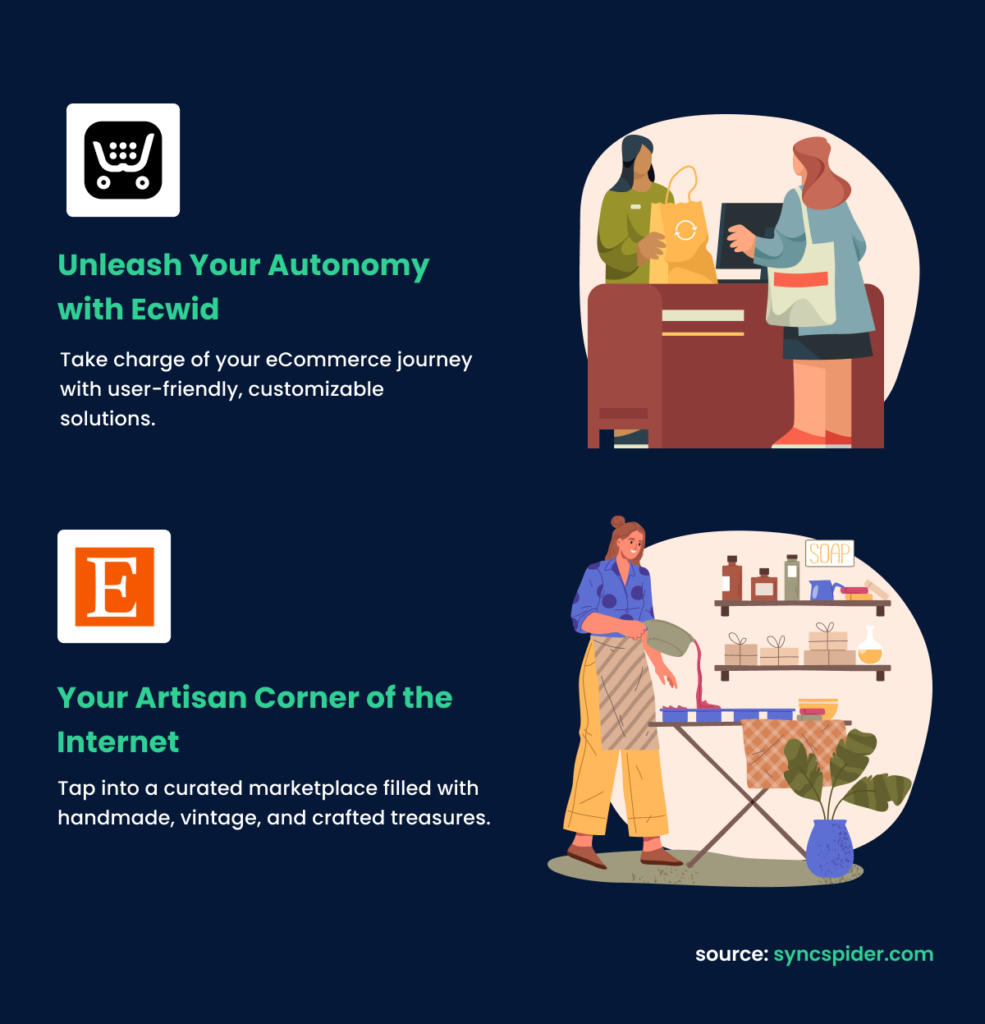
But let’s put the potato analogies to bed. The takeaway? It’s a world of give and take. Understanding the pros and cons of each platform is key to making the choice that fits like a glove for your business.
And here’s a nugget of wisdom: Etsy carves out its niche in the C2C marketplace, specializing in handmade, vintage, and craft supplies, all lovingly created and curated by a community of independent sellers. It’s like the artisan corner of the internet.
So, with the basics under our belt, let’s march forward!
Etsy vs Ecwid: Which One Wins the Popularity Contest?
Choosing between Ecwid and Etsy is like comparing apples and oranges – they’re both fruit but oh so different! People flock to both platforms, but for varied reasons.
Let’s talk numbers, shall we? Etsy is like a bustling city with a population to match. In 2023, it’s home to a staggering 7.3 million sellers and a whopping 96.2 million buyers. In the grand scheme of e-commerce marketplaces, Etsy snags about 0.13% of the global market share. Not too shabby for a platform specializing in the unique and handmade!
Ecwid, on the other hand, is a bit more like a mystery novel when it comes to the exact numbers of sellers and buyers. What we do know is that it’s the backbone for 175,410 live stores, and over 900,000 websites are using Ecwid as their e-commerce plugin. This platform is particularly popular in the USA, the UK, Canada, and Germany – a bit like a world tour of e-commerce!
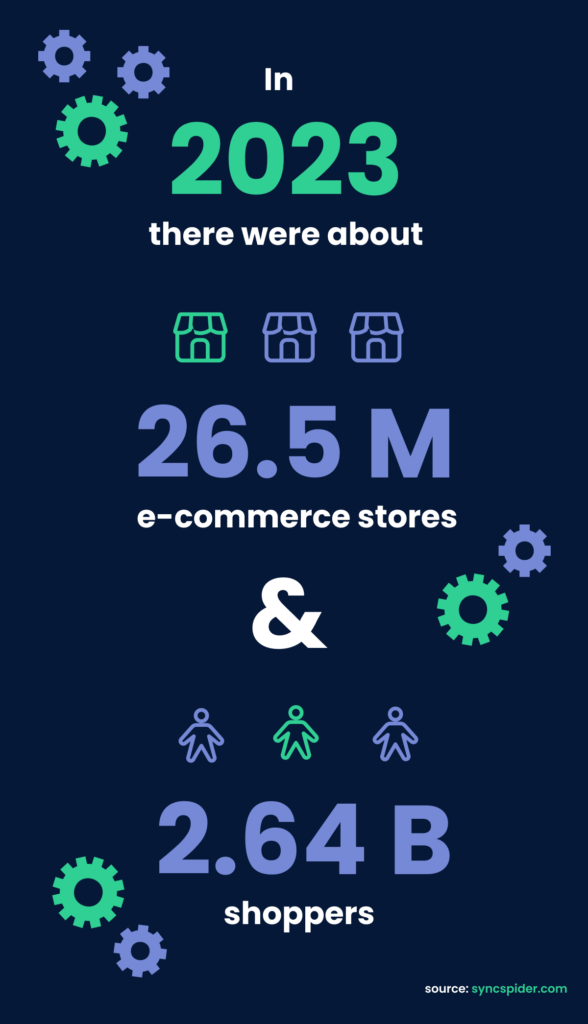
To give you a bit more context, imagine this: as of 2023, there are about 26.5 million e-commerce stores out there, with a jaw-dropping 2.64 billion shoppers browsing and buying online. That’s a whole lot of digital foot traffic!
So, with these figures in mind, let’s dive deeper into what each platform has in store for you.
Opening Stores: Etsy and Ecwid Review
For those who’ve been following my digital escapades (remember in-depth Ecwid vs Shopify comparison?), you’ll know I’ve already ventured into setting up an online store on Ecwid and Shopify. I won’t rehash the entire experience here (no one likes a rerun!), but I’ll give you the gist: setting up on Ecwid is as straightforward as a Sunday morning. It’s particularly handy if you’ve already got an existing website and are looking to add an e-commerce flair to it. Ecwid steps in like a friendly neighbor, asking, “Got a site? Great, let’s add some shopping magic to it!” So, from that perspective, it’s easier than ever to add an online store to an existing website.
Now, let’s talk Etsy. The journey begins with a simple registration form. You can hop on board using your Google, Facebook, or Apple account or go old school with an email sign-up (which was my choice). It’s like choosing your own adventure in the world of e-commerce.
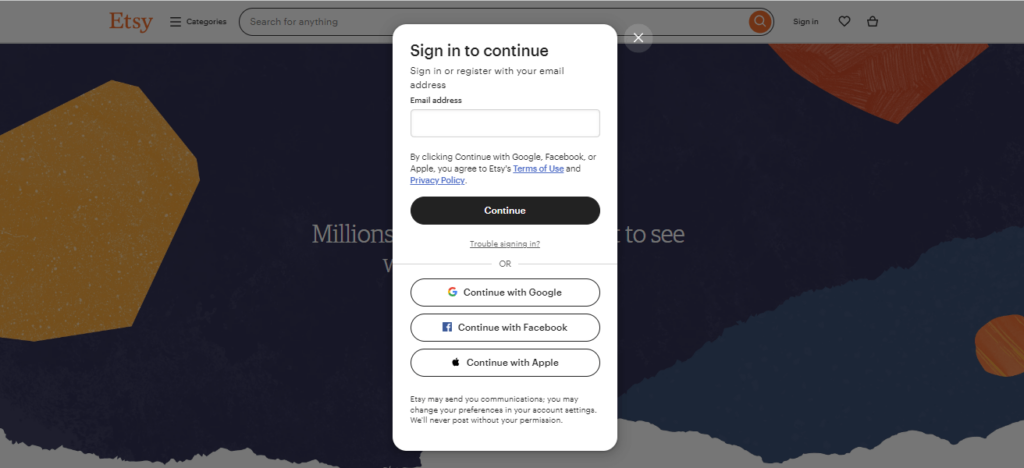
Once you’ve picked your path, it’s time to dive into the details. Etsy’s sign-up process is like filling out a personality quiz for your store. You’ll insert your name, create a password, and then – plot twist – you’re presented with four documents to read and agree to. It’s a bit like agreeing to the terms and conditions of an exciting new app.
But wait, there’s more! Etsy then gently guides you through a short questionnaire. This isn’t just any questionnaire; it’s your chance to flag areas where you need a helping hand. Think of it as Etsy’s way of giving you a leg up. I personally tackled five areas, including the mysteries of search discovery, the art of packing and delivery, the science of pricing, the maze of finances and fees, and the adventure of selling internationally. It’s great if you’re a new kid on the block who wants to build an online store from scratch.
If this were a race on ease of setup, Etsy noses ahead of Ecwid by just a hair. It’s like choosing between two delightful desserts – both are sweet, but one just has that extra sprinkle of ease.
Listing Products on Online Stores
Let’s dive into the world of listing products on Ecwid and Etsy, and oh boy, did Etsy catch me off guard – in a good way! Picture this: you’re cruising through the setup, picking preferences, naming your store, and then – bam! – it’s time to list your products. Etsy’s process is as smooth as silk, a real breeze that swept me right off my feet. Kudos to Etsy for making it feel like a walk in the park!
Remember my previous musings about Ecwid’s store management? It was pretty neat, but Etsy? It’s like they read my mind and then added a cherry on top. However, both platforms share a common nemesis in my book – the dreaded image formatting. It seems my battle with creating the perfect thumbnail continues, with Etsy suggesting a minimum of 2000 px for images. Pro tip: make sure your images fit nicely in a square frame to avoid any awkward cropping.
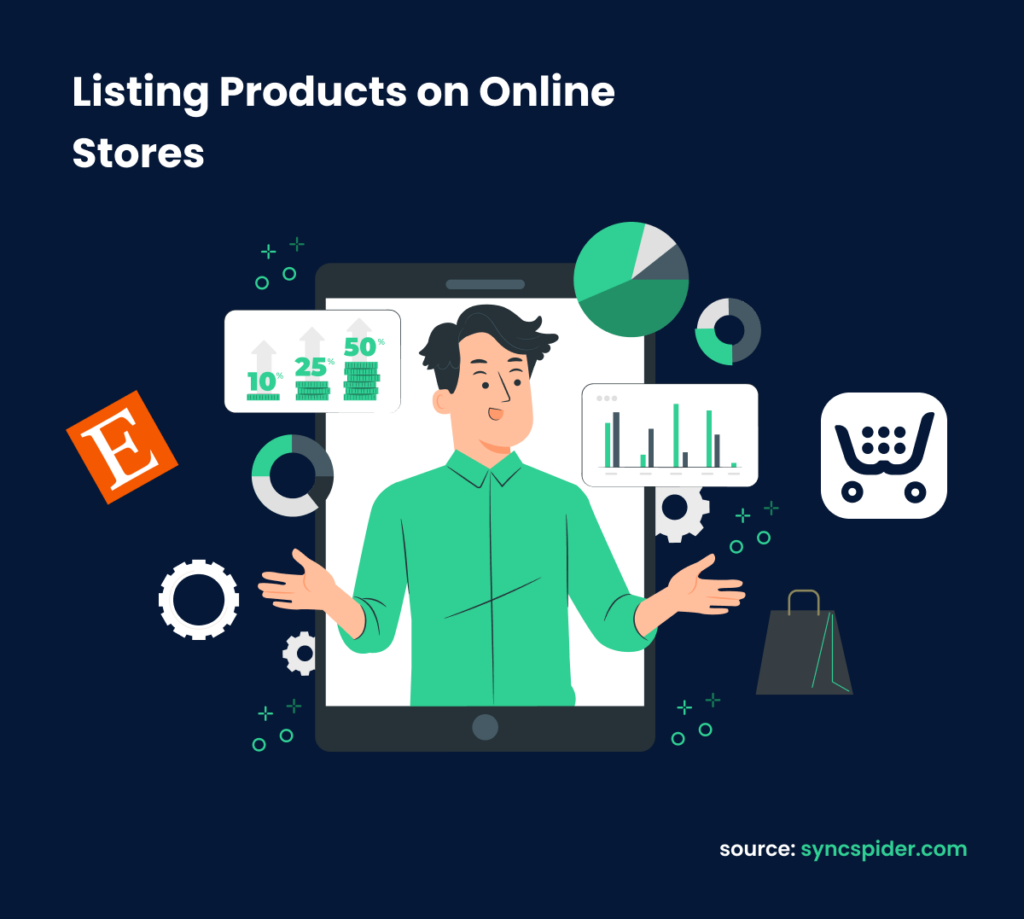
But here’s a nifty feature on Etsy that caught my eye: they encourage you to add a short video of your product. They say a picture is worth a thousand words, but a video? That might just double your sales!
Once you’ve filled in all the details for your product – think description, price, delivery, and so on – a simple click on ‘Save and continue’ brings your listing to life. And let’s not forget about the return policy options on Etsy – you can go with their standard policy or tailor one to suit your shop.
Now, back to Ecwid. I’ve covered this ground before, so I’ll keep it brief. Ecwid also shines with its layout and user-friendly dashboard, making product management as easy as pie. No need to navigate a labyrinth of menus – everything you need is right there, at your fingertips.
For those embarking on their first shop or expanding into new marketplaces, here’s a piece of advice: consider using integration and automation tools. Trust me, listing a handful of products is one thing, but when you’re scaling up to hundreds or thousands, these tools can be lifesavers.
In the end, listing products on both platforms was a comparable experience. The difference between Ecwid and Etsy, is that Etsy might have a slight edge in user-friendliness, but when it comes down to it, I’d call it a tie. Both have their charms and quirks, making them equally capable contenders in the product-listing arena.
Show Me the Money: Payment and Billing on Etsy vs Ecwid
Welcome to the crucial chapter in our eCommerce saga: the payment and billing segment. After all, what’s an online store without the cha-ching of transactions?
Let’s navigate the Etsy payment landscape first. Before you even think about listing your products, do a little homework on Etsy’s payment eligibility. Trust me, you don’t want to tumble down a rabbit hole only to find out your country isn’t on the list. Etsy offers a smorgasbord of payment options – we’re talking PayPal, Visa, MasterCard, American Express, Apple Pay, Google Pay, and more. For those in regions where direct bank transfers are a no-go, Etsy brings Payoneer into the mix.
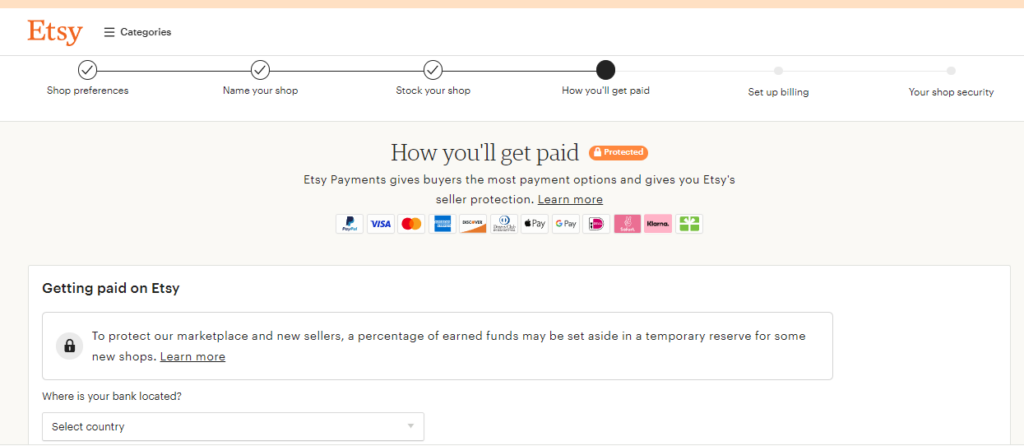
Setting up your payment method on Etsy is like confirming your seat on a flight – necessary and reassuring. Double-check your bank account details to ensure a smooth takeoff.
Now, let’s peek into Ecwid’s world. Depending on where you’ve set up camp, Ecwid offers a whopping 82 payment gateway options. This includes familiar faces like Stripe, PayPal, Lightspeed Payment, Square, Alipay Wallet Payments, BitPay, and more. However, it’s interesting to note that Payoneer isn’t part of this extensive lineup.
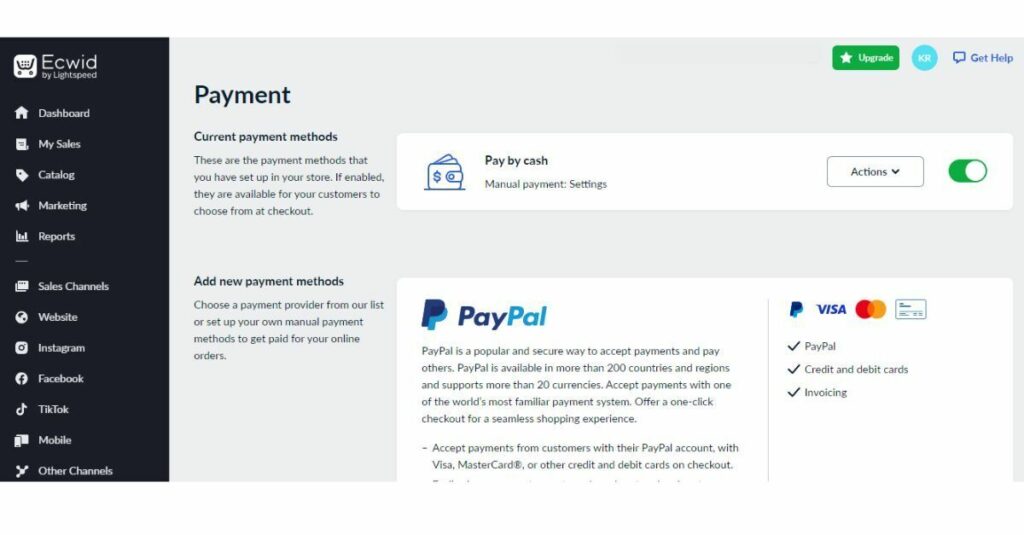
Getting your payment setup right is crucial – it’s the backbone of your store’s functionality.
In the grand payment scheme of things, if Etsy supports your country, the process tends to be smoother and less hair-pulling than Ecwid. However, Ecwid’s diverse range of payment gateways for eCommerce websites is a strong point in its favor. It’s like having a Swiss Army knife at your disposal – versatile and ready for any financial challenge.
SEO and Marketing: The Invisible Battle
Welcome to the stealthy world of SEO and marketing, where the fight for visibility is as intense as a ninja duel in the shadows. It’s the backend of your eCommerce success.
Before you leap into the bustling world of online marketplaces and platforms, take a moment to consider your SEO strategy. It’s like setting up a beacon to guide shoppers to your store. Without it, you might as well be a ghost ship in the vast ocean of e-commerce. Keep in mind that Amazon didn’t climb to the top of the online retail world by cutting corners on SEO. It’s now a giant, munching away a massive 57% of all online sales, largely thanks to how well it plays the search engine game.
When it comes to Ecwid, let’s just say it’s not the champion of SEO. Sure, it has the basics down with its H-structure, but it’s missing several key elements that could elevate your store’s visibility in Google’s search results. In this arena, I’ve previously tipped my hat to Shopify for its superior SEO capabilities.
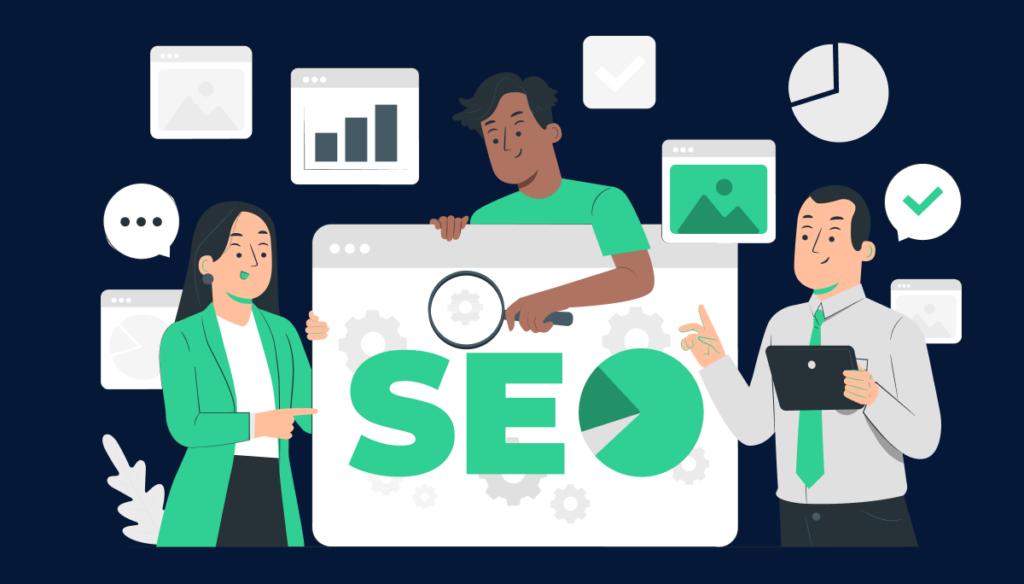
Etsy, as a marketplace, offers a different SEO game. Here, you can sprinkle your store page with content rich in carefully chosen keywords – think high search volume and low competition. It’s like planting a garden that attracts the right kind of bees. The FAQ section is another tool in your arsenal, helping you stand out in a sea of sellers. But beyond that, Etsy’s SEO offerings are pretty basic.
So, who wins the SEO showdown? Honestly, it’s a draw. Both Ecwid and Etsy provide fundamental SEO tools, but they’re not going to perform SEO miracles. You won’t find the advanced features that a platform like Shopify boasts. However, with a bit of elbow grease, keyword research, and basic SEO implementation, you can still light up your store’s presence in the digital universe.
No clear victor here, but the battle for online visibility continues. Onward we march!
Customer Support: Finding a Helping Hand in the Digital Maze
Ah, customer support – the lifeline of any digital platform, yet often as elusive as a mirage in the desert. Let’s navigate the slippery terrain of support services offered by Ecwid and Etsy, shall we?
Starting with Ecwid, they boast a Help Center, akin to a digital library filled with answers. But what about live chat? Remember my previous quest to find it? This time, armed with more determination, I stumbled upon an article pointing the way. And there it was, hidden like a secret passage in a castle, right on the Dashboard (or the ‘Admin panel,’ as they cryptically call it) in the upper right corner. Hidden in plain sight – who would have guessed!
Once you locate this hidden gem, you’re presented with options: email support, chat, or phone support. But here’s the catch – the chat and phone support are exclusive members of the paid plans club. So, if you’re sailing on the free version, you’re left with good ol’ email.

Now, let’s talk Etsy. Etsy’s support page is like a maze of pre-written answers, a labyrinth where you’re likely to encounter solutions to questions you haven’t even thought of. After a bit of a trek through this maze, you finally spot a beacon of hope – the “Still need help” button. But alas, my journey ended with just an option to send an email, despite tantalizing hints of chat and phone support.
In this round of Ecwid vs Etsy, declaring a winner is like trying to catch a butterfly with your bare hands – a bit tricky. Both platforms offer support, but accessing live help feels like a quest in itself. The crown goes to whoever can find and access chat support the fastest. (I know, I’m being wicked.)
Pricing, aka How Much Will This Adventure Cost Me?
Let’s talk about the elephant in the room – pricing. After all, every adventure has its cost, and in the world of eCommerce, this is where the rubber meets the road.
- Ecwid’s Transparent Pricing: Ecwid plays it cool with clear-cut pricing. They offer a range of packages, each with its own set of features, including a free plan (albeit with limited features). Here’s a quick recap of their pricing structure:
Ecwid Price Free Forever US$ 0.00/mo Venture US$ 14.08/mo Business US$ 29.08/mo Unlimited US$ 82.50/mo As you can see, Ecwid’s pricing hasn’t changed since our last rendezvous, and that’s a relief.
- Etsy’s Pricing Puzzle: Now, brace yourself for Etsy. Determining your costs for big and small businesses here is like piecing together a complex puzzle. You’ll need your detective hat and an accountant’s calculator. Here’s a sneak peek into the potential fees if you want to sell online on Etsy:
- Listing Fee: Each item you list costs US $0.20, renewable every four months. But wait, there’s more! If you list multiple quantities of the same item (say, 10 of the same painting), you’ll be charged again each time one sells, as Etsy considers it a listing renewal.
- Transaction Fees: Etsy takes a 6.5% cut of your sales price every time an item sells.
- Etsy Ads and Offsite Ads Fees: Want more visibility? You’ll need to invest in ads. Etsy ads have a fixed price based on your set daily budget. Offsite ads charge only upon conversion, which might be the more economical option.
- Subscription Fee – Etsy Plus: For US$ 10 monthly, you get the Etsy Plus package, which includes 15 listings and $5 in ad credits.
- Etsy’s Pricing Puzzle: Now, brace yourself for Etsy. Determining your costs here is like piecing together a complex puzzle. You’ll need your detective hat and an accountant’s calculator. Here’s a sneak peek into the potential fees on Etsy:
And that’s just scratching the surface. There are also in-person selling fees, payment processing fees, delivery fees, regulatory operating fees, pattern fees, and currency conversion fees.
So, who wins the pricing round in Ecwid vs Etsy? It’s a tough call. Ecwid offers straightforward, no-surprise pricing with a free plan option, while Etsy’s cost structure is more like a choose-your-own-adventure book with various paths and potential costs. Your choice depends on your business model, business plan, and how deep you’re willing to dive into your pockets.
Going Big: Connecting Ecwid and Etsy for Omnipresence
Dreaming of e-commerce omnipotence? Imagine your Ecwid store shaking hands with the Etsy marketplace, creating a powerhouse of online presence. This isn’t just about expanding your digital footprint; it’s about making your mark in online selling.
Now, if you’re considering manually intertwining your Ecwid store with Etsy, I tip my hat to you – that’s a Herculean task. Picture yourself as a digital octopus, juggling multiple tasks and trying to synchronize everything. It’s possible, but oh, it’s a challenge!
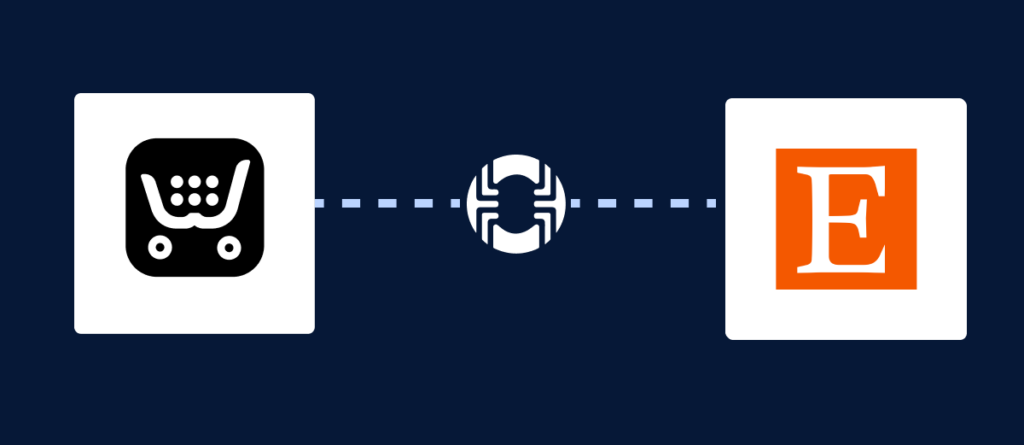
Here’s a game-changer: automation tools like SyncSpider. Think of it as your digital wizard, casting spells to connect your Ecwid store seamlessly with Etsy. This isn’t just about saving time but preserving your sanity. With a tool like SyncSpider, syncing products, inventory, and orders becomes a walk in the park.
So, if you’re ready to spread your wings and soar into the realm of eCommerce giants, don’t hesitate to harness the power of automation. It’s like having a superpower in the competitive world of online sales. Go big, go bold, and let automation be your trusted sidekick!
Signing Out: The End of Our Ecwid vs Etsy Journey
And just like that, we’ve reached the end of our in-depth digital journey through the realms of Ecwid and Etsy. As your dedicated content writer and eCommerce explorer, I’ve navigated yet another marketplace to bring you the real scoop straight from the trenches of online selling.
So, what’s the final word? If you’ve been following my journey, you’ll know that Ecwid and I have had our ups and downs. But when it comes to Etsy, the pricing model gave me pause – it’s a bit like a rollercoaster ride for your wallet. If you’re not fazed by the potential costs and your products align with Etsy’s unique, artsy vibe (think vintage treasures, handmade crafts, and art pieces), then Etsy might just be your promised land to sell your products.
On the flip side, if you’re venturing into the eCommerce world with a different type of product, or you’re just dipping your toes in the water to test the temperature, Ecwid could be your go-to. It’s like having a friendly guide by your side as you embark on your selling journey.
There you have it, folks – the curtain falls on our Ecwid vs Etsy saga. Whether you choose to walk the path of Ecwid or dance in the Etsy rain, I wish you success, joy, and a whole lot of sales. Happy selling, and see you on our next adventure! Until then, keep exploring, keep selling, and keep shining in the digital marketplace!
Kristina Radosavljević
Content writer at SyncSpider
Kristina, a content writing veteran with 15 years of experience, specializes in the realms of IT, eCommerce, and the evolving landscapes of integration and automation, deftly weaving complex concepts into compelling narratives.

